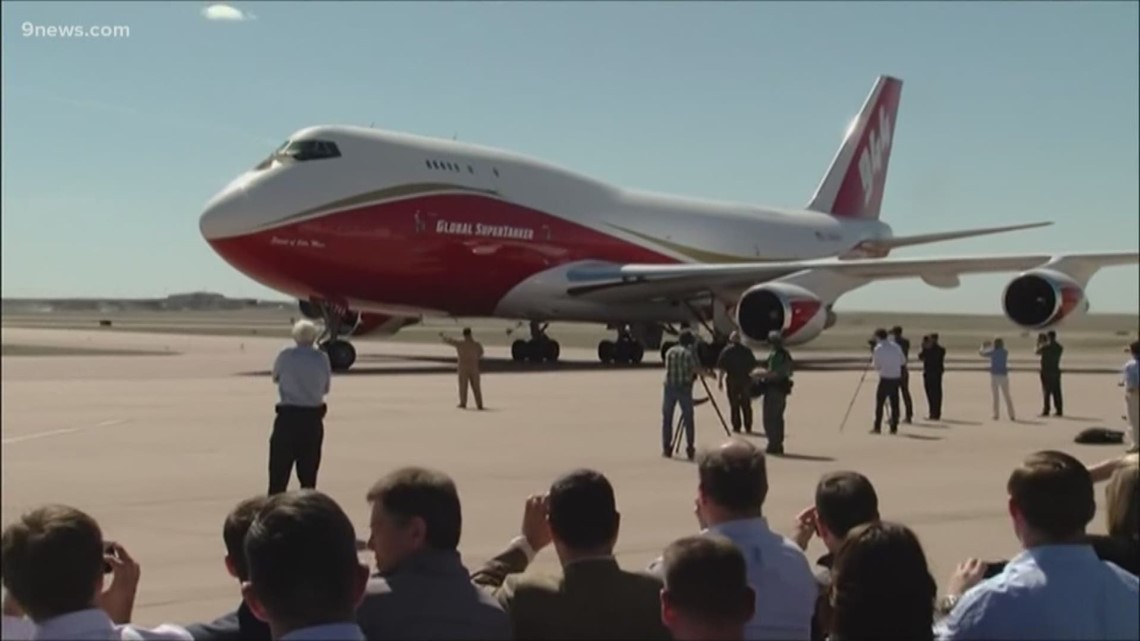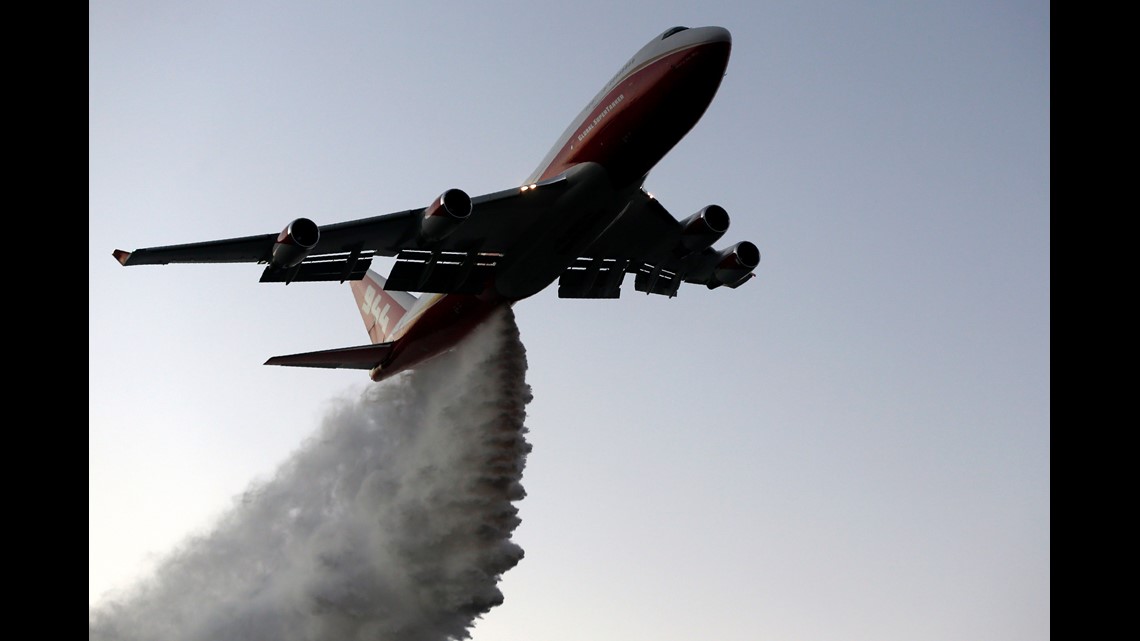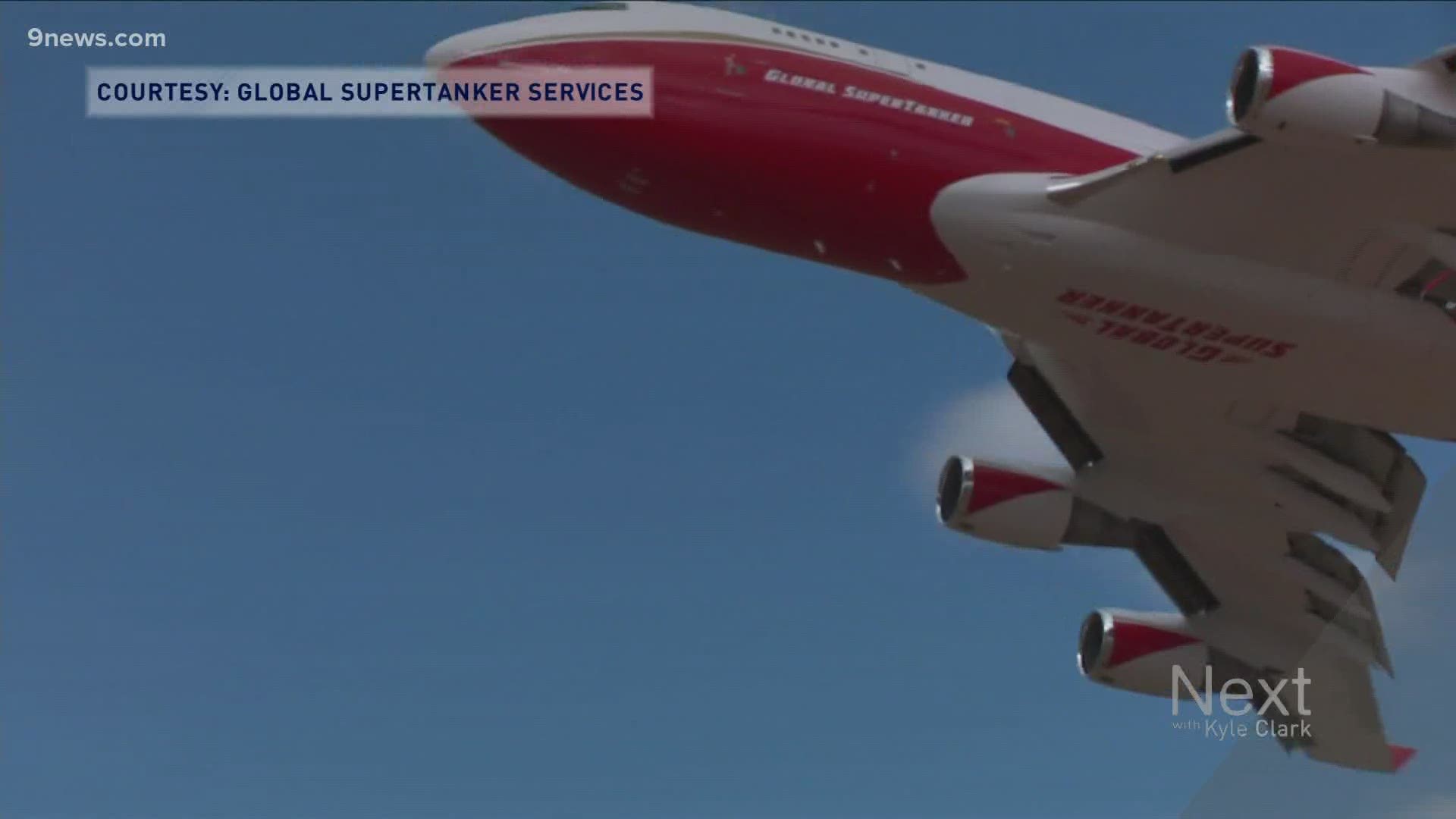DENVER — Back in 2018, Next with Kyle Clark Reporter Marshall Zelinger likened asking “where is the Supertanker?” to pondering why the tax revenue from legal marijuana hasn’t solved all of Colorado’s problems.
A lot has changed since 2018 (ok … a lot has changed since February 2020), but one thing has stayed the same: “where is the pot money?” is still a ubiquitous question, and multiple 9NEWS viewers have emailed in recently to ask why the Supertanker hasn’t been deployed to battle one of the multiple large fires raging across Colorado.
It’s a fair question to ask. The Grizzly Creek Fire in Glenwood Canyon has closed Interstate 70 for a week, and is being considered a national priority. The Pine Gulch Fire in Grand Junction, meanwhile, has swelled to 85,407 acres, making it the fourth largest in the state’s history.
As for the Colorado Springs-based Supertanker? It’s in southern California, where multiple wildfires are also burning. That’s according to John Winder, chief operations officer for Global Supertanker LLC.
The Supertanker, which is a Boeing 747 that can carry 19,200 gallons of water, water enhancers or fire retardant, is at San Bernandino Air Tanker Base. It’s been there since Aug. 5, Winder said.
For what it’s worth, when there’s a big fire, fire officials don’t necessary default to “LET’S CALL THE SUPERTANKER.”
Winder said when there’s a fire, the incident commander has to request aircraft. They don’t request that support by name, rather by type, and then someone else (usually the U.S. Forest Service or another appropriate agency) assigns them.
The state of Colorado also clearly gets lots of “WHERE IS THE SUPERTANKER?” questions, because they have a whole FAQ devoted to it on its website.
Currently, Colorado, Oregon and California are the only states that can use the Supertanker, according to the FAQ. In certain cases, the Supertanker can be deployed elsewhere, like late last year when it was sent to the Amazon rainforest to help with firefighting efforts there.
Since the Global Supertanker is big (fun fact, it’s called a “VLAT,” or “very large air tanker”) it requires a lead plane on all drops. That’s provided by the federal government, meaning it’s something the state can get to launch on a whim.


And then there’s the fact that a “VLAT” might not be the best for all fires. Here’s the explanation from the state’s website:
“Additionally, it is important to note that incident commanders, when aircraft are available select and use the most appropriate aircraft for each wildfire response. Selecting the appropriate resource for the fire environment is critical to firefighting efficiency and aerial firefighting success. Aircraft performance factors include take-off distance, fuel burn rate, fuel duration and engine performance. Aerial firefighting effectiveness also depends on fuel type and terrain of the fire environment.
“While the Supertanker’s massive drop capability may be the best resource for some fires, other firefighting aircraft may be more appropriate for remote fires in more complex terrain or in higher-elevation or hotter-temperature settings. In such cases smaller, more maneuverable aircraft (such as helicopters or SEATs) are safer and more effective. As with all aircraft, the Global Supertanker aircraft performance is affected by temperature and elevation. The higher and hotter the conditions, the more power is required -- which can translate to decreased available payload or less fuel duration.”
Colorado does have its own firefighting fleet on standby. That includes two helicopters, two single-engine air tankers, and two Pilatus PC-12 Multi-Mission Aircraft with multiple cameras.
Additional resources can come from the Rocky Mountain Area Coordination Center, as well as nearby Air Force bases.


SUGGESTED VIDEO: Full Episodes of Next with Kyle Clark

